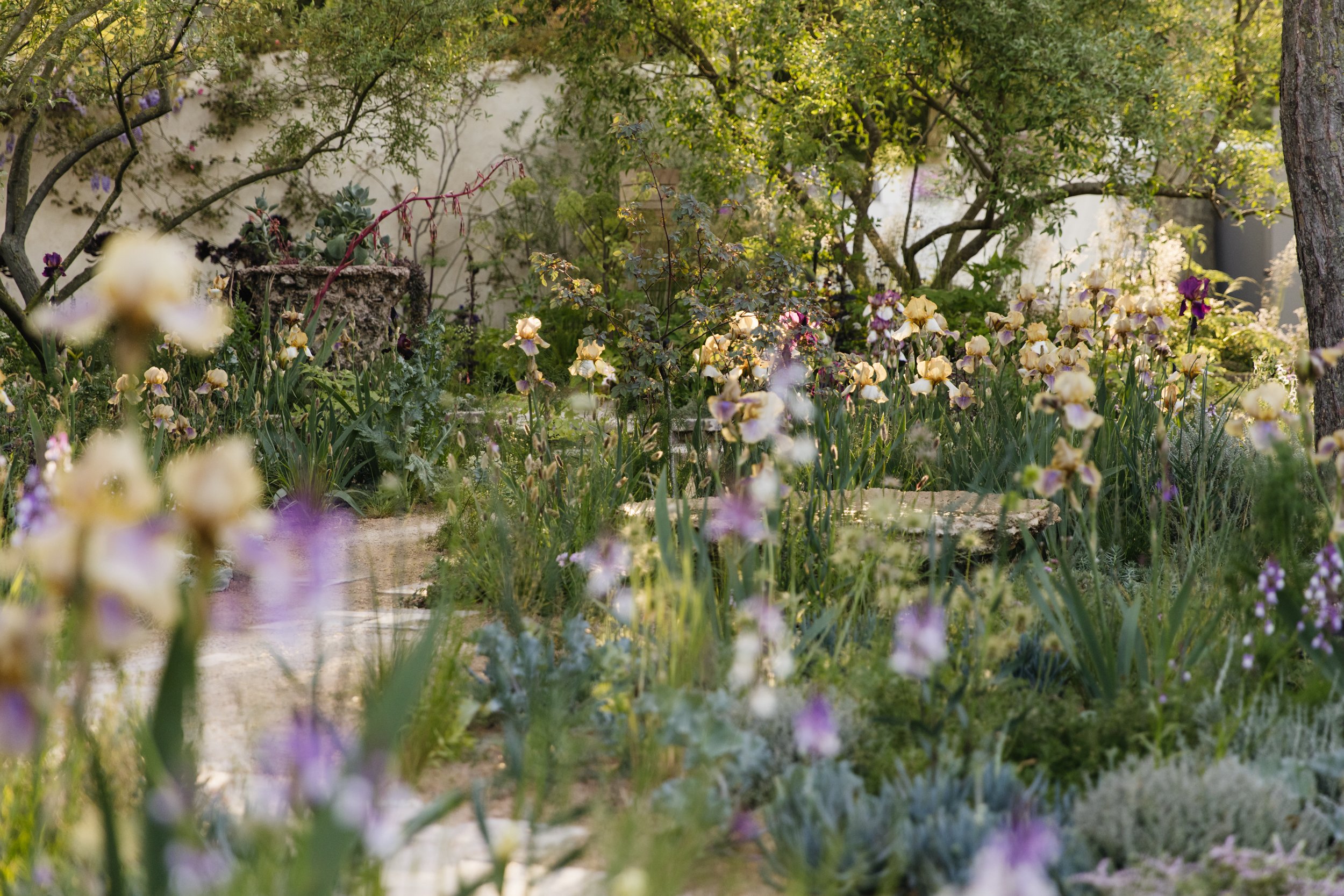Show Gardens / RHS Chelsea 2023 / Nurture Landscapes Garden
next >
This garden drew inspiration from the paintings and horticultural craft of artist Cedric Morris, the former owner of Benton End house and garden, the once renowned art school in Suffolk. Sarah’s vision for the garden was to create the sensation of walking through a beautiful painting.
Huge swathes of Iris ‘Benton Olive’, drifted throughout the garden, dissipating into other cultivars of ‘Benton’ Iris. Each plant and object were given space, so that intricate forms could be appreciated. Succulents such as giant dark Aeonium, and the alluring glaucus tones of Cotyledon ‘Cedric Morris’ were arranged to spill over the edges of oversized vessels.
Trees were positioned carefully to offer generous views through the space from all directions. Arching, clear stems of Eleagnus informally framed views, creating areas to gather and routes to explore. The airy silver foliage of Eleagnus ‘Quick Silver’ was given a weighty counterpoint by the two towering and mature Pinus sylvestris (pruned to recall their less-hardy cousins Pinus pinea).
Our table and benches were made from the timber of a fallen Beech. The boundary rope was woven from the previous season’s hop bines, and left-over mould-struts from the brick making became the posts that held the rope. Large trees that came into the country for the garden were borrowed from other projects and will have a life elsewhere. We were also able to avoid pouring any new concrete on-site. No element of the garden went unexamined in terms of its environmental impact.
The plants and materials of the show garden will support the reimagining and reopening of Benton End to the public by The Garden Museum in collaboration between SPL and Benton End’s Head Gardener, James Horner.
It was our deeply held ambition that this garden should be the most sustainable ever at RHS Chelsea. The measurement of sustainability and carbon footprint within landscapes is very much in its infancy, so the question of ‘how’ drove all our logistics. Our creative collaborators, Local Works Studio suggested the simplest way to meet our ambition was to source locally and use as few virgin materials as possible. We therefore sought out reclaimed or waste materials from a corridor between our pre-show base and the Chelsea showground. Local Works Studio used these raw substances to develop a palette of new low-carbon, waste-based materials in a range of subtle colours and textures that added layers of interest to the garden.
Our contractor, Mark Whyman Landscapes, hand-cast thousands of bricks to pave the garden, form table legs, plinths for pots, and pillars for climbers to twine around. The garden boundaries were organic or reclaimed: straw bale walls were rendered with naturally pigmented clay to create strong, organic forms; reclaimed canvas screens from the film industry were stretched onto reclaimed wood and painted with plant-based paints. Bold and eye-catching vessels were made from the same low-carbon waste mix as the bricks and were shaped through experimental making to hold succulents or water.
















